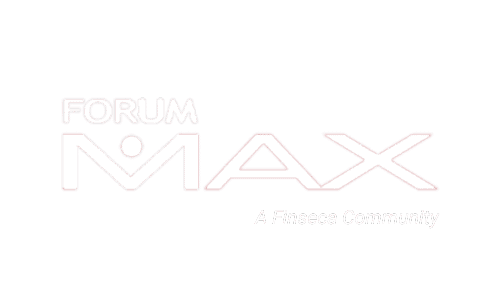
The AALU WRNewswire and WRMarketplace are published by the Association for Advanced Life Underwriting® and Greenberg Traurig as part of the Essential Wisdom Series, the trusted source of actionable technical and marketplace knowledge for AALU members—the nation’s most advanced life insurance professionals.
Thursday, March 9 2017 WRM#17-10
TOPIC: What’s Trending: What Experts from the 2017 Heckerling Institute Had to Say.
MARKET TREND: Presenters at the 2017 Heckerling Institute on Estate Planning confirmed what many estate planning advisers are already seeing: the current environment is enhancing options for some traditional planning approaches while also creating new opportunities.
SYNOPSIS: The 2017 Heckerling Institute on Estate Planning identified several critical trends for legacy and life insurance planning in this uncertain environment, including (1) the need for flexibility, (2) the appealof estate freezes, like GRATs, installment sales, and preferred partnerships for current planning, (3) the tax considerations for life insurance planning regardless of any estate tax repeal, (4) the enhanced focus on creditor protection for trust beneficiaries, and (5) the U.S. Tax Court’s review of generational split-dollar.
TAKE AWAYS: Overall, Heckerling presenters were optimistic regarding the current planning environment, particularly as this is not the first time that the estate and life insurance industry has dealt with the prospect or passage of major tax changes (e.g., 2010 and 2012). Many planning approaches, like trusts, estate freezes, and life insurance, are inherently flexible and multi-faceted, and tax changes can actually enhance different structuring options and benefits. Accordingly, this environment should trigger thorough audits of client plans and open the door for a dialogue between allied professionals and clients, with interest in life insurance products continuing as both a solution to practical needs and as a complement to other planning approaches.
The following provides highlights of some noted legacy planning trends from the 2017 Heckerling Institute on Estate Planning, reflecting how tax, life insurance, and other advisers are adapting to uncertainty.1
FLEXIBILITY IS THE NAME OF THE GAME
Consistent with our survey of legal, tax, insurance, and financial advisers in WRMarketplace No. 17-08, Heckerling presenters emphasized the need for flexibility in both basic legacy plans and advanced planning approaches.
Suggestions included:
| Flex Option | What It Does | Why Use |
| QTIP Marital Trusts | Allows executor to elect whether some/all of the trust should qualify for the marital deduction.
Assets not subject to the election are not includible in surviving spouse’s estate. |
Estate executor can consider whether estate or income tax considerations are of primary concern at the first spouse’s death when making the election. |
| Grantor Trusts | Can (1) give clients powers of substitution to reacquire trust assets and (2) allow trustee to make loans to the grantor with adequate interest but without adequate security. | Grantor can use substitution power to re-acquire low or high-basis trust assets, depending on tax laws. Loan power helps ensure grantor trust status and can provide a benefit to the grantor if later needed. |
| GST Exempt Trusts | Can exempt trust assets from generation-skipping transfer (GST) and estate taxes for multiple generations (if use long- term trusts). | Preserves trust assets from estate and GST taxes regardless of future tax law changes (e.g., estate tax repeal and reinstatement). |
| Discretionary Multi- Beneficiary Trusts | Provides full discretion to the trustee to distribute to a broad class of beneficiaries, possibly including charities (or allowing a selector to add them as beneficiaries). | Allows significant flexibility to the trustee to adapt distributions to future circumstances (e.g., tax laws, creditor protection issues, etc.). |
| Formulas & Alternate Provisions | Provides for bequests and/or general powers of appointment to beneficiaries, triggered either by formulas or current laws. | Makes estate/trust distributions most efficient for then-existing tax laws and can cause estate tax inclusion of assets if needed for basis planning. |
| Trust Decanting | Lets the trustee transfer assets from an existing trust to a different trust (either existing or newly- created). | Trust assets can be moved to a trust with morefavorable distribution or administrative terms that address new tax laws.2 |
| Trust Protectors | Appoints persons who can make various discretionary tax elections or trust modifications without court review/approval. | Facilitates changes to irrevocable trusts to adapt to future circumstances with less administrative hassle. |
| Independent Trustees | Names as a trustee a person who is not related or subordinate to the grantor or the trust beneficiaries. | May offer greater distribution flexibility,3 increase creditor protection, and give the trust more options when selecting a jurisdiction or governing law. |
NOW IS THE TIME FOR ESTATE FREEZE PLANNING
Estate “freezes” transfer asset appreciation to family members or trusts for their benefit. As the asset appreciation or income must exceed certain federally-required “hurdle” rates to transfer wealth, these approaches work best when the hurdle rates are low and the asset has maximum growth potential.
Why Now? Heckerling presenters noted several reasons why clients may want to execute freezes now.
Low Rates. Estate freezes benefit from current low interest rates that are on the rise (Federal Reserve Chairwoman Janet Yellen has signaled a rate hike could come as early as this month). Even small increases in the applicable hurdle rate can have a significant effect:
Example: Jack creates a five-year, zero-out GRAT at a 7520 rate of 2.4% and transfers $5 million in assets to the trust. The annuity payments to Jack increase annually by 20%. At 6% average annual growth, the GRAT leaves $716,963 to the remainder beneficiaries. If the 7520 rate increases by just0.6%, to 3.0%, the remainder beneficiaries’ share is cut by $116,580.
A rising rate environment should incentivize freezes now, possibly for longer-terms to lock-in current low rates – e.g., longer-term GRATs may be preferred to short-term, rolling GRATs.
No/Minimal Gifts. These plans result in minimal or no taxable gifts, allowing reductions in a taxable estate while preserving gift and estate tax exemptions for later planning, if needed.
Lifestyle Preservation/Income. These approaches only transfer asset appreciation, generally returning the initial asset value, along with a predictable income stream to the clients.
Flexibility. These plans can easily incorporate flexibility to adjust to changing circumstances, particularly with regard to the investment performance. For example, installment sales can allow pre-payment of the note to exit the transaction, or, if using a grantor trust, the grantor can have a non-fiduciary power to substitute trust assets for other assets of an equivalent value.
Grantor Trusts. If the trust continues as a grantor trust for income tax purposes after the freeze term, the grantor will continue to pay the trust’s income taxes, which permits trust growth to compound without reduction for annual taxes.4
Valuation Discounts. The status of the proposed Treasury Regulations under Code §2704 and whether they will ever be finalized remains uncertain, although Treasury officials have commented that, if issued in final, the effective date of the regulations would be on or after the date of issuance. Accordingly, traditional valuation discounts should remain viable, at least for now.5
Types of Freezes. Currently effective estate freezes include zeroed-out GRATs, intra-family loans and installments sales to grantor trusts, and preferred partnership freezes, each of which will be separately covered in an upcoming “Estate Freeze Series” of WRMarketplaces.
LIFE INSURANCE NEVER GOES OUT OF STYLE
Apart from the numerous practical considerations served by life insurance (see e.g., WRMarketplaces No. 16-46 and 16-50), Heckerling presenters further noted that life insurance can assist with tax issues regardless of estate tax repeal.
Under an estate tax regime, life insurance, held outside the taxable estate, can offset estate taxes incurred by holding an asset until death to obtain a basis step-up. Consider, however, if the estate tax is repealed. Under longstanding and appropriate tax principles, the growth of cash value within a life insurance policy is not subject to income tax during the insured’s lifetime and, in most cases,6 may be accessed without tax through policy withdrawals (up to basis) and loans. Death benefits also are paid without income tax. With retirement plans, however, distributions to a holder or beneficiary are often taxed as ordinary income. Accordingly, in a post- estate tax repeal world, life insurance may operate even more effectively as a retirement and legacy planning option.
In addition, clients implementing estate freezes may want to acquire life insurance as a hedge. Effective estate freezes often depend on the market performance of the assets transferred and the client’s survival of the term. Life insurance acts as a non-correlated asset with regard to these issues, helping to offset the potential exposure.
EMPHASIZE CREDITOR PROTECTION IN TRUST PLANNING
Trusts generally offer creditor protection for their beneficiaries. However, there is a trend developing among states that that could cause a loss of creditor protection in the context of a beneficiary’s divorce if the beneficiary has too much trust access or control. Trust assets could then be subject to support and other claims of a divorcing spouse, undermining a primary objective of the family in creating the trust and causing serious problems for the trustee and beneficiaries.
As will be discussed in more detail in an upcoming WRMarketplace, when creating trusts like irrevocable life insurance trusts (ILITs), clients may want to consider incorporating numerous provisions to enhance creditor protection, including: (1) making trust distributions fully discretionary, (2) using only independent trustees, (3) eliminating a beneficiary’s trust interest while they are involved in divorce or bankruptcy proceedings, and (4) using expanded spendthrift clauses that specifically address spouses and former spouses. The extent to which clients use these options will ultimately depend on their desired balance between creditor protection and beneficiary access and control.
GSD IN FRONT OF THE TAX COURT, FINALLY
Overview. Generational split dollar (GSD)7 generally is a private split dollar arrangement (SDA) between a client and his or her ILIT designed to fund the ILIT’s acquisition of life insurance on the client’s child or more remote descendant. In one version of GSD, a client enters into a non- equity, economic benefit SDA with the ILIT to fund the life insurance purchase. The client holds a reimbursement right under the SDA equal to the greater of the policy’s cash value or the premiums paid by the client.
The SDA terminates upon the earlier of the insured’s death or the mutual agreement of the ILIT and the client. The client has no right to access the policy’s cash value during the SDA term and has no unilateral right to terminate the SDA.
Arguably, under these circumstances: (1) pursuant to the split-dollar Treasury Regulations (SD Regulations),8 the client only reports as a gift the cost of the annual economic benefit provided to the ILIT, which is the “cost of current life insurance protection” provided by the policy (i.e., the annual term premium)9and (2) the estate tax value of the client’s reimbursement right under the SDA is believed to be entitled to a significant valuation discount, since the client cannot access the policy’s value or unilaterally terminate the SDA, and the insured’s death is not expected for many years.
Enter Morrissette & Levine. In 2016, the U.S. Tax Court issued limited rulings in Est. of Morrissette v. Commissioner10and Est. of Levine v. Commissioner,11 which held that, under economic benefit GSDs similar to the one above, the SD Regulations solely determined the gift tax consequences of the taxpayer’s premium payments under the SDA, confirming that the taxpayer’s annual gift was limited to the annual economic benefit provided to ILIT — good news.
What It Means. Although Morrissette and Levine were the first reported decisions on GSD, Heckerling presenters emphasized that these decisions dealt with the narrow issue of gift taxation largely because the cases fell almost squarely within the SD regulations. The IRS, however, does not agree with these decisions and may continue to challenge the gift tax issues under economic benefit GSDs.
Neither ruling addressed the much larger IRS challenge of whether the SDA reimbursement right is subject to a valuation discount upon transfer (during life or at death) — a key feature of GSD planning. Accordingly, economic benefit GSD will likely remain under IRS scrutiny.
TAKE-AWAYS
Overall, Heckerling presenters were optimistic regarding the current planning environment, particularly as this is not the first time that the estate and life insurance industry has dealt with the prospect or passage of major tax changes (e.g., 2010 and 2012). Many planning approaches, like trusts, estate freezes, and life insurance, are inherently flexible and multi-faceted, and tax changes can actually enhance different structuring options and benefits. Accordingly, this environment should trigger thorough audits of client plans and open the door for a dialogue between allied professionals and clients, with interest in life insurance products continuing as both a solution to practical needs and as a complement to other planning approaches.
DISCLAIMER
This information is intended solely for information and education and is not intended for use as legal or tax advice. Reference herein to any specific tax or other planning strategy, process, product or service does not constitute promotion, endorsement or recommendation by AALU. Persons should consult with their own legal or tax advisors for specific legal or tax advice.
NOTES
1 See (1) Steve R. Akers, Heckerling Musings 2017 and Estate Planning: Current Developments,” February 2017, Bessmer Trust and (2) Martin M. Shenkman, 2017 Heckerling Institute of Estate Planning Highlights,” Wealth Management Webinars, Feb. 3 and 16, 2017 for an extensive discussion of these and other notable highlights of the 51st Annual Philip E. Heckerling Institute on Estate Planning, Jan. 9-13, 2017.
2 The requirements for decanting and the extent to which the terms of a receiving trust can differ from the decanting trust vary by state law, although many states will not allow changes to mandatory distribution provisions or certain other mandatory rights of the decanting trust’s beneficiaries. See WRMarketplace No. 14-21 for a discussion of decanting.
3 E.g., not limited to an ascertainable standard, such as for health, education, maintenance, and support.
4 Of course, the continuation of grantor trust status and the grantor’s payment of the trust’s income tax burden must consider the financial impact to the grantor. Thus, the trust may want to allow for the termination of grantor trust status during the grantor’s lifetime, in the event the tax burden becomes economically impractical for the grantor to bear.
5 However, for transactions entered into after proposal of these regulations (released on Aug. 2, 2016), if disclosing the transaction on a gift tax return, clients and tax advisers may want to consider disclosing that the asset valuation does not factor in the impact of the proposed §2704 Treasury Regulations, since the regulations do not apply to transfers made before the regulations are issued in final.
6 Assuming the policy is not a modified endowment contract.
7 The arrangement also may be referred to as “intergenerational split dollar,” “discount private split-dollar,” or “three generation splitdollar.”
8 See Treas. Reg. §1.62-22.
9 As determined under the principles of IRS Notice 2002-8. The gift is offset by any amounts paid by ILIT towards the premium.
10 146 T.C. No. 11.
11 U.S. Tax Court Docket No. 9345-15, Order and Decision, Jul. 13, 2016.






